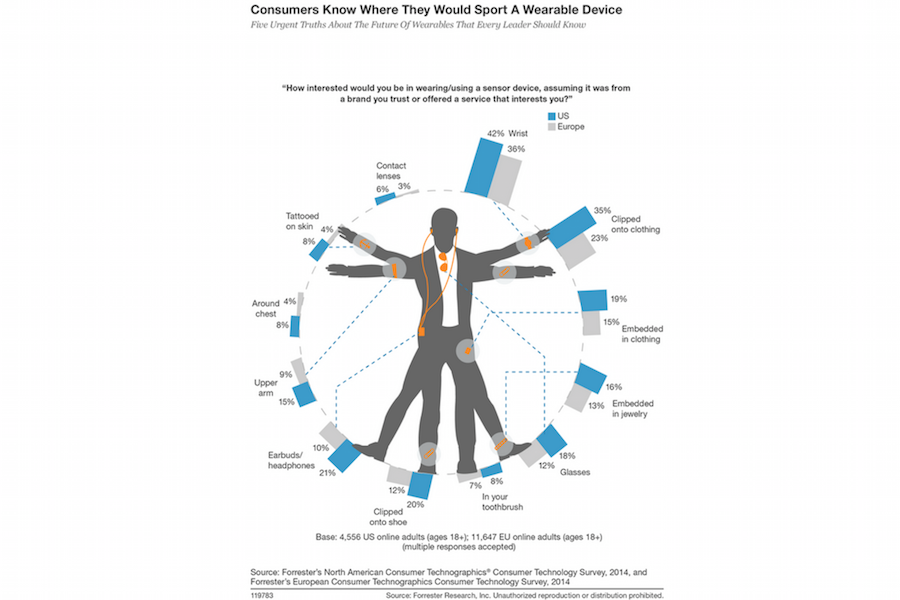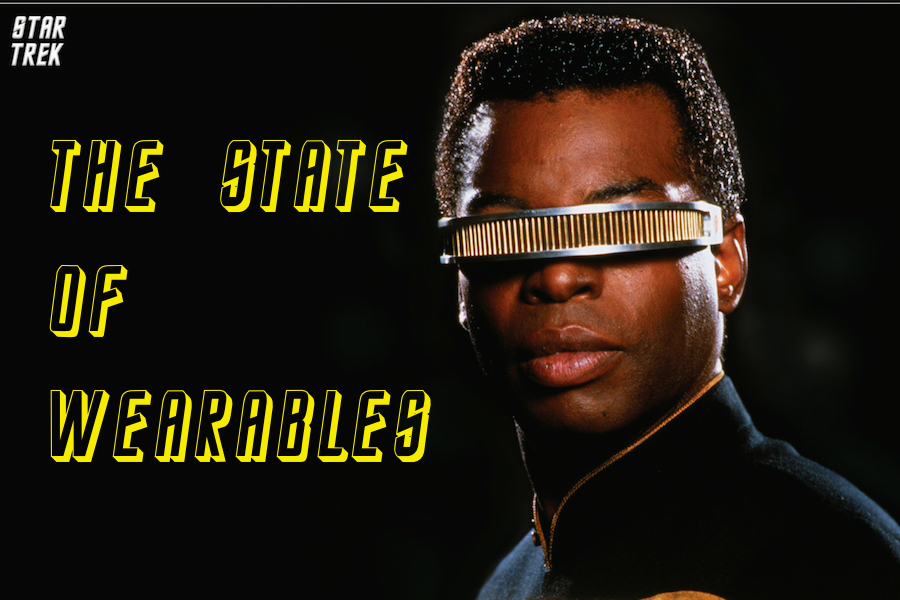Wearable technology is here to stay. While they may have to face some objections compared to smartphones and tablets, the rise of wearables is undeniable. Now with the release of the Apple Watch this month, nearly all major technology players are in the game, and competing within a very niche app ecosystem. If you’re thinking of developing a cutting-edge application for a wearable device, here are some facts and considerations to take.
Probably one of the first times I remember wearables is from Geordi La Forge of Star Trek —he wore an eyepiece that allowed him to see, which could be compared to today’s Google Glass (or maybe a virtual reality headset). In reality, Star Trek predicted a lot of technologies that encompassed transportation, medicine, and communication, years before they were actually invented in the real world. What started as a sci-fi invention is now reflected by the consumer attitude that we want and desire these technologies in our every day lives. Every great new device or piece of technology always starts from the imagination.

Imagination aside, there are real stats backing up the fact that wearables are becoming a new every day tech that the majority of people will invest in at a very near point in the future. According to a survey conducted by the Forrester Research in 2014 that polled more than 15,000 online adults worldwide, the trend indicated that nearly half in the US were interested in owning a smart device that would be worn on the wrist. In the same poll, more than a third of responders said they were interested in wearing a device that would be clipped onto their clothing.
Business Insider compiled some predictions based on the rise of wearables, here are some of the most telling points:
- Global wearables market will grow at a compound annual rate of 35% over the next five years, reaching 148 million units shipped annually in 2019, up from 33 million units shipped this year.
- The smartwatch will be the leading product category and take an increasingly large share of wearable shipments. We estimate smartwatch shipments will rise by a compound annual rate of 41% over the next five years. Smartwatches will account for 59% of total wearable device shipments this year, and that share will expand to just over 70% of shipments by 2019.
- The Apple Watch will kick-start growth in the overall smartwatch market. The Apple Watch will account for 40% of smartwatch shipments in 2015 and reach a peak 48% share in 2017.
- Fitness bands and miscellaneous wearable device types, like smart eyewear, will continue to cater to niche audiences. Fitness bands, because of their appeal to niche audiences interested in health and exercise, will see their share of the wearable device market contract to a 20% share in 2019, down from 36% this year. There will be some blur between fitness bands and smartwatches.
- Now that both Apple and Google are in the smartwatch market, they will dominate, much as they have in the smartphone and tablet markets. Because these platforms make up over 90% of the entire mobile platform market, many mobile users interested in wearable devices will gravitate toward Apple Watches and Android Wear-based devices.
- Barriers still persist, and these will inhibit consumer wearables adoption and usage. Smartwatches in particular must become standalone computing devices with more robust functionality for the devices to become mainstream. Other barriers include small screen size, clunky style, limited battery life, and lack of a “killer app” that can drive adoption. – Source: Business Insider
Wearable technology has been on the rise and will continue to pave a new path for itself as a new consumer electronic. If your business or company is cutting edge and wants to develop applications that can be used on wearable interfaces, contact us today to get started!

